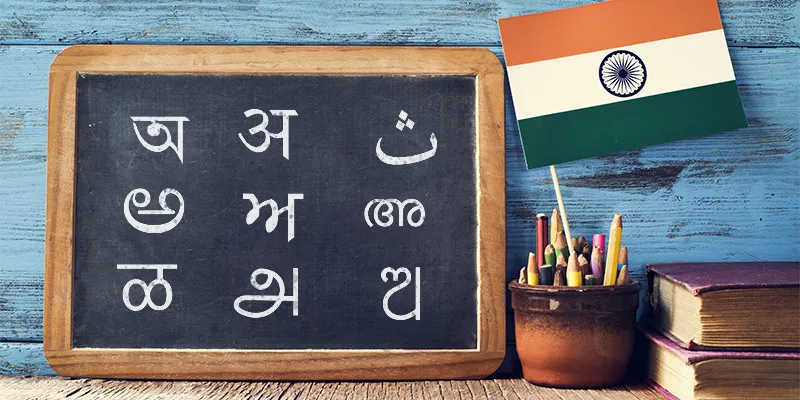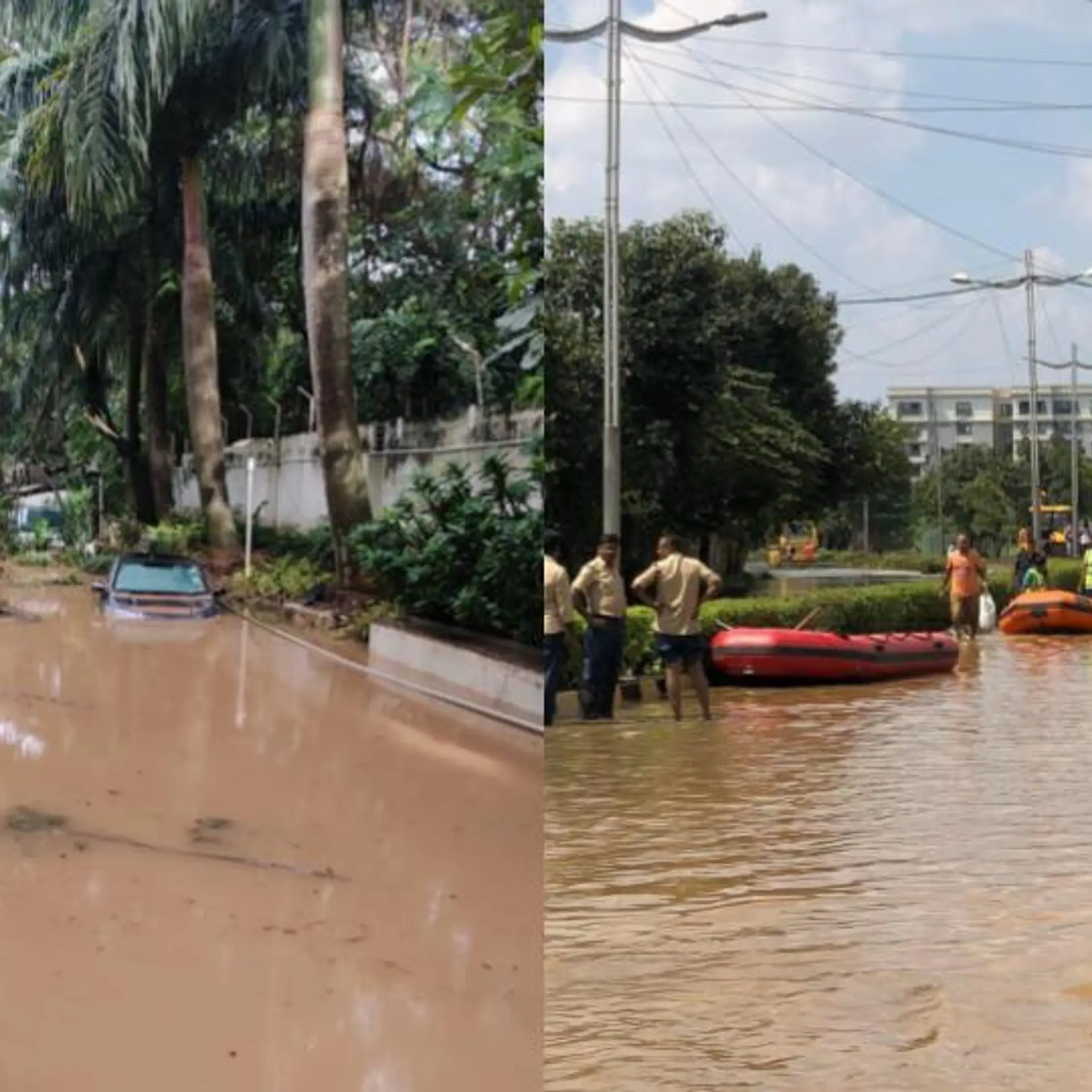19K regional language stories and counting — observing International Mother Language Day with YourStory
There is a popular saying in Hindi — ‘kos kos par paani badle, chaar kos par baani’. The saying points out how the language in which people communicate in India changes every few miles.
Languages are not merely templates that help us communicate but a treasury of culture in themselves. Recently, I had the chance to witness a performance by Vibha Rani, a popular Maithili and Hindi poet. She performed ‘gaali geet’, a folk musical form performed during weddings in North Bihar and Nepal. ‘Gaali geet’ is a medium using which the bride’s family publicly abuses and makes fun of the bridegroom’s family during wedding celebrations. These songs, which question patriarchy and other cultural and social biases, were once extremely popular in the region of Mithila where Maithili is spoken. Maithili, considered one of the most phonetic languages of India, is fast dying.

The state of Indian languages
Official numbers state that 122 languages remain in India. However, if we go by acclaimed literary critic Ganesh Devy’s exhaustive study on Indian languages, People’s Linguistic Survey of India, there are 780 languages spoken in India. The survey, spread across 35,000 pages and 50 volumes, claims that 220 Indian languages have become extinct in the past 50 years, and suspects 150 more languages will disappear in the next 50 years.
Despite being the second largest consumer of the internet, India has fallen far behind in the quest to find digital representation for its languages. Barring English, all Indian languages put together produce less than 0.1 percent of all content generated on the internet. Compare this with Russian, Japanese, German, or Spanish, all of which have a representation of 5 percent or above in the digital space.
The lack of representation of Indian languages on the internet can also be attributed to its limited reach among the non-English-speaking audience. According to the results of the Indian Readership Survey conducted in 2013, nine out of the 10 most read newspapers are in Hindi and other regional languages. Only one, The Times of India, is an English publication. India Today was the only English magazine among the top 10 magazines. Five of the most widely read magazines were published in Hindi while the remaining four were published in Malayalam.
Celebrating Indian languages with YourStory
In order to cater to the growing digital audience in search of meaningful content in their mother tongue, YourStory went vernacular in September 2015, and has hence since then published over 19,000 stories in 12 vernacular languages. These languages include Hindi, Telugu, Tamil, Bangla, Kannada, Marathi, Gujarati, Malayalam, Asamiya, Urdu, Punjabi, and Odia.
Today, as we observe International Mother Language Day to promote peace and multilingualism, we bring to you some of the stories we have covered in languages other than English over the past year. We hope that reading these stories in your native language will help you reconnect with your roots and culture.
Tenzin Negi: The daily wage worker who built a multi-crore real estate company
The story, written in Hindi, is about Tenzin Negi, the son of a Tibetan refugee. Starting off as a daily wage worker earning Rs 3 every day, he worked his way up, started taking subcontracts, and made it big in the construction sector, while taking special care of his labourers and their needs. Today, Tenzin’s construction company has an annual turnover of Rs 25–40 crore.
Tenzin’s story, along with nearly 3,500 other Hindi stories, chronicles the lives of people who inspire.
Krishnaveni: The government school teacher on a mission
Krishnaveni’s story, similar to over 1,500 other inspiring stories, is published in Tamil. The government school teacher started a Facebook page for her middle school to display the capabilities and efficiency of children studying in government schools. She has implemented numerous new methodologies in her teaching and has been doing tremendous work.
Bikali Kar: The rosogolla wizard
Over the past few months, Odisha and West Bengal have been debating over the rosogolla’s origin. This article, published in Odia, explores the roots of the sweet and explores the origins of an 80-year-old brand, Bikali Kar, which has become synonymous with the popular delicacy. There are nearly 1,100 articles published on the YourStory Odia platform.
Paranjape Cashews: A couple’s journey to the top
Samruddhi and Rushikesh Paranjape’s story is published in Marathi. The couple quit their jobs to start a cashew processing unit in a small village. Today Paranjape Cashews is ranked among Amazon India’s top 10 sellers. Over 1,800 articles have been published on the YourStory Marathi platform.
Gerry Judah : The artist in search of his roots in Kolkata
Gerry Judah's story, like 1,700 other stories of entrepreneurs and change-makers, is written in Bangla. Gerry is a UK-based sculptor, painter and installation artist, whose works adorn all major museums in Europe and the US. He has offered to set up an installation in Kolkata, his birthplace.
Ratilal Makwana: The Dalit entrepreneur who today owns a Rs 1,000 crore business
Ratilal Makwana’s story is written in Hindi. Ratilal was born in a poor dalit family in Gujarat. A victim of discrimination and unjust social practices, Ratilal took his family’s traditional leatherwork to greater heights and today owns a Rs 1,000 crore business.
Prem Ganapathy: The Dosa King
Prem Ganapathy, also known as the Dosa King, ran away to Mumbai from Tamil Nadu at a very young age. From doing odd jobs like cleaning hotels and serving tea, Prem has reached the pinnacle of success. 'Dosa Plaza', the dosa joint he started is today an international brand with an annual turnover of nearly Rs 50 crore.
Adarsh: Fighting prejudices along the way to success
The story of Arjun, like 2,000 other stories, was written in Kannada. Arjun comes from a very well-to-do family which, although a boon, was also somehow a curse. His father was an engineer, and mother, a doctor who was a gold medallist. His relatives naturally expected him to display the same brilliance, but his mathematics was very poor, as a result of which he failed his boards and faced a lot of difficulty in his pre-university education. He faced immense humiliation for his failure in formal education. He wanted to become a doctor like his mother but had to give up that dream. Added to this was the shame he was forced to feel for his weight.
Arjun had always been overweight and succumbing to societal pressures, he began going to the gym. This insecurity and his futile efforts to reduce weight took a toll on his education again and he failed his BBM course. During the same time, he had also taken up a course in hypnotherapy and enrolled in a neuro-linguistic programme, keen to maintain his interest in medicine. After failing his BBM, he began addressing the mental health of his mother's patients with the knowledge he had gained in the two courses. Eventually, he opened his own clinic alongside corporate training, student counselling, freelance counselling, and has slowly built his credibility as a professional trainer.
Since most of these stories are published in the regional language, they bring in high and targeted impact in their communities. Many a time, the entrepreneurs, change-makers, and organisations have reached back claiming a visible increase in their outreach after a story was written and published on their respective regional platforms.







